Delina H. Bishop, Stacy Sweeney, Michael Sweeney
ABSTRACT
A 36-year-old male Army Veteran diagnosed with extensive traumatic brain injuries (TBI), multiple concussions, chronic pain syndrome, anger, irritability, and malaise was treated in a 12-week mixed-modality protocol of hyperbaric oxygen, red light therapies, intermittent hyperoxic/hypoxic training (IHHT), neurofeedback, NAD+ IV infusions, and oral pre/probiotic supplements.
Final results subjectively revealed marked improvements in sleep quality, mood, and anger management. Clinical findings revealed no migraine activity since starting the protocol, as well as PTSD and depression scores decreasing below the diagnosable threshold.
Case Report
A 36-year-old male Army Veteran is diagnosed with extensive traumatic brain injuries (TBI), multiple concussions, chronic pain syndrome, anger, irritability, and general malaise.
The 12-Week Protocol included Hyperbaric Oxygen Therapy (HBOT), Intermittent Hyperoxic/Hypoxic Training (IHHT), photobiomodulation (red light), neurofeedback, NAD+ w/glutathione infusions, 90 days of Amare Global pre/probiotic/nootropic oral supplementation, and health coaching sessions addressing sleep, diet, and thought patterns.
Measurable Outcomes
- PCL-5 Assessment decreased from 18, 2 to 5 pre, mid and post-protocol respectively. Scores below 35 represent <15% probability of PTSD.
- PHQ-9 Assessment – decreased from 7, 0,to 2, respectively. From moderate to minimal depression scores.
- PSQI Sleep Assessment – pre-protocol 14, mid-protocol 7, post-protocol 7. Scores below 5 are associated with good sleep quality.
- qEEG Brain Mapping – Post-protocol 50% plasticity and 44% normalization. Score over 30% plasticity and 35% normalization are considered outstanding.
- Cognitive Emotional Checklist (CEC) – Pre to post protocol responses improved by 61%, 46%, 50%, 67%, and 71%, respectively. The CEC is a standardized psychological test that allows a client to rate the severity of various cognitive and emotional issues
- Veteran’s wearable data:
- 45-55% restorative sleep/night
- Improved gut health
- more sustained energy
Subjective Outcomes
“Before the program I had constant bloating and now I have no issues whatsoever.”
“I am not crashing every night, where I used to need several energy drinks a day just to make it through. My quality of sleep has improved. While I still make decisions that affect my sleep (watching TV late), the quality of the sleep I am getting is much improved.”
“Overall pain relief has been amazing. I used to take Excedrin every 12 hours for neck and back pain, but now I am pain free!”
Discussion
This case report demonstrates the effectiveness of multi-modal treatment for the symptoms of chronic pain syndrome, anger, irritability and traumatic brain injuries over a 12-week period. This study followed a protocol focusing upon root-cause issues to include enhancing angiogenesis and neurogenesis in the brain through oxygen modalities 1,2, enhancing ATP production through NAD+ 3 and photobiomodulation 4, minimizing brainwave dysregulation with qEEG neurofeedback 5, and diminishing gut-brain axis neurochemical imbalances through supplementation.6-9 This data derived from this regimen will significantly impact the treatment protocols of future Veterans and First Responders suffering from the effects of TBIs, concussions and chronic pain syndrome within this continuing program and beyond.
Delina Bishop, MD
Medical Director OPTI Health Lake Norman [email protected]
Stacy Sweeney, MSPT, MS
Founder, Director Neurocognitive Services OPTI Health Lake Norman [email protected]
Michael Sweeney, MBA
Founder and Chief Executive Officer OPTI Health Lake Norman [email protected]
REFERENCES
- Tal S, Hadanny A, Sasson E, Suzin G, Efrati S. Hyperbaric Oxygen Therapy Can Induce Angiogenesis and Regeneration of Nerve Fibers in Traumatic Brain Injury Patients. Front Hum Neurosci. 2017 Oct 19;11:508. doi: 10.3389/fnhum.2017.00508. PMID: 29097988; PMCID: PMC5654341.
- Bayer U, Likar R, Pinter G, et al. Intermittent hypoxic-hyperoxic training on cognitive performance in geriatric patients. Alzheimers Dement (N Y). 2017;3(1):114-122. Published 2017 Feb 8. doi:10.1016/j.trci.2017.01.002
- Radenkovic D, Reason, Verdin E. Clinical Evidence for Targeting NAD Therapeutically. Pharmaceuticals (Basel). 2020;13(9):247. Published 2020 Sep 15. doi:10.3390/ph13090247
- Hamblin MR. Photobiomodulation in the brain: low-level laser (light) therapy in neurology and neuroscience. In: Hamblin MR, ed. Photobiomodulation in the Brain: Low-Level Laser (Light) Therapy in Neurology and Neuroscience. Academic Press; 2019:1-630. doi:10.1016/C2017-0-02758-1.
- Dahl MG. Neurofeedback with PTSD and traumatic brain injury (TBI). In: Kirk HW, ed. Restoring the Brain: Neurofeedback as an Integrative Approach to Health. Routledge; 2020:256-284. doi:10.4324/9780429275760-13.
- Ceremuga TE, Martinson S, Washington J, et al. Effects of L-theanine on posttraumatic stress disorder induced changes in rat brain gene expression. ScientificWorldJournal. 2014;2014:419032. doi:10.1155/2014/419032
- Unno K, Yamada H, Iguchi K, et al. Anti-stress Effect of Green Tea with Lowered Caffeine on Humans: A Pilot Study. Biol Pharm Bull. 2017;40(6):902-909. doi:10.1248/bpb.b17-00141
- Savignac HM, Couch Y, Stratford M, et al. Prebiotic administration normalizes lipopolysaccharide (LPS)-induced anxiety and cortical 5-HT2A receptor and IL1-β levels in male mice. Brain Behav Immun. 2016;52:120-131. doi:10.1016/j.bbi.2015.10.007
- Messaoudi M, Violle N, Bisson JF, Desor D, Javelot H, Rougeot C. Beneficial psychological effects of a probiotic formulation (Lactobacillus helveticus R0052 and Bifidobacterium longum R0175) in healthy human volunteers. Gut Microbes. 2011;2(4):256-261. doi:10.4161/gmic.2.4.16108


